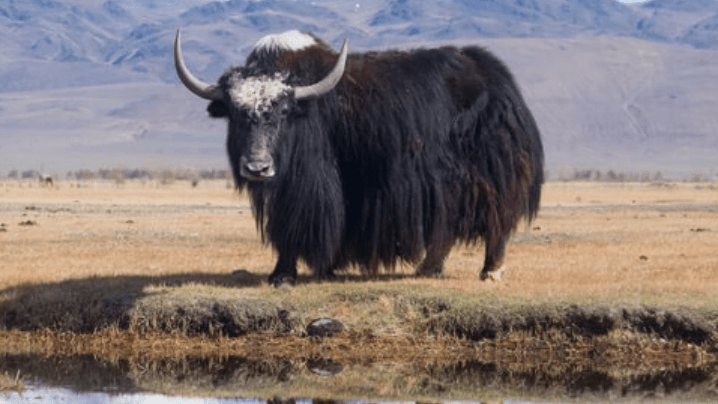Importing Live Water Buffalo and Yak into the United States

USDA APHIS regulates the importation of all ruminants and their germplasm (embryos/oocytes, semen, cloning tissue) to prevent the spread of animal diseases. Ruminants include all animals that chew the cud, such as cattle, buffaloes, sheep, goats, deer, antelopes, camels, llamas, and giraffes.
Requirements
Northern Border Ports
- Idaho: Eastport
- Maine: Houlton
- Michigan: Detroit, Port Huron
- Montana: Raymond, Sweetgrass
- New York: Alexandria Bay, Buffalo/Niagara Falls
- North Dakota: Dunseith, Pembina, and Portal
- Vermont: Highgate Springs
- Washington: Sumas
Air/Ocean
- Newburg, NY
- Miami, FL
- Los Angeles, CA
For list of special/limited ports of entry, see 9 CFR 93.403.
Northern Border Port of Entry Requirements
APHIS requires confirmed pre-shipping approval from the Northern Border Port Services (NBP) office for the import of all Canadian breeder yak and water buffalo. For contacts, view Port Services offices by State or email vs.npb@usda.gov.
If the port of entry does not have adequate facilities to safely inspect such animals, inspection will be deferred to the destination facility. The following steps are required:
- The importer must notify the NBP office at least 14 days in advance of the proposed shipment, providing the address of the destination premises and the scheduled date and time of arrival. The NBP office will arrange an inspection or assessment of the destination facility, as appropriate, to approve the facility prior to import. The NBP office will verify that APHIS Veterinary Services personnel are available to perform the inspection of the animals on the proposed date of arrival.
- Once the facility is approved, the NBP office will immediately email notification of the approval to the importer. The importer may then schedule an appointment with the port of entry veterinary medical officer (VMO), at least 7 days in advance, for clearance. The shipment will not be allowed entry without written (email) notification of approval.
- A copy of the email approval notice from the NBP office must be presented to the Port VMO, along with the completed VS Form 17-29, Declaration of Importation (106.94 KB), the required import permit, and the original Canadian Food Inspection Agency-endorsed export health certificate.
- After clearance at the port, the import water buffalo/yaks will be released. If the port inspection is not possible, the animals must proceed to the destination State under seal to the previously approved destination premises for inspection.
Canada
- A permit and export health certificate are required for the import of breeding animals. Only the export health certificate is required for immediate slaughter animals.
- Protocol: Breeding Water Buffalo and Yak From Canada (313.84 KB)
- Health Certificate: Live Breeding Yak or Water Buffalo Import from Canada (219.13 KB)
- Protocol: Immediate Slaughter Water Buffalo and Yak From Canada
Water buffalo and yak used for zoological purposes can be permitted into the United States on a case-by-case basis after a full review by APHIS, depending on the country of origin. For more information, contact Live Animal Imports.
These health certificates allow the import of water buffalo (Bubalus bubalis) and yak (Bos grunniens) embryos.
European Union
- A permit and export health certificate are required.
- Model Health Certificate: Bovid Embryo Import From the European Union (212.77 KB)
Due to the recent detections of foot-and-mouth disease (FMD) in Germany, Hungary, and Slovakia, import of water buffalo and yak embryos from these countries is currently prohibited.
Because of ongoing lumpy skin disease outbreaks in Europe, water buffalo and yak embryos from the following regions, collected on or after the specified dates, are not eligible for importation to the United States:
- Greece (August 4, 2015–present)
- Bulgaria (March 29, 2016–present)
- Croatia (August 8, 2016–present)
- Italy (March 6, 2025–present)
- France (April 30, 2025–present)
- Switzerland (July 19, 2025-present)
- Spain (August 8, 2025 - present)
United Kingdom (Great Britain, Northern Ireland)
- A permit and export health certificate are required.
- Health Certificate: Bovid Embryo Import From Great Britain
- Health Certificate: Bovid Embryo Import From Northern Ireland
These health certificates allow the import of water buffalo (Bubalus bubalis) and yak (Bos grunniens) semen.
European Union
- A permit and export health certificate are required.
- Model Health Certificate: Bovid Semen Import From the European Union
Due to the recent detections of foot-and-mouth disease (FMD) in Germany, Hungary, and Slovakia, import of water buffalo and yak semen from these countries is currently prohibited.
Because of ongoing lumpy skin disease outbreaks in Europe, water buffalo and yak semen from the following regions, collected on or after the specified dates, are not eligible for importation to the United States:
- Greece (August 4, 2015–present)
- Bulgaria (March 29, 2016–present)
- Croatia (August 8, 2016–present)
- Italy (March 6, 2025–present)
- France (April 30, 2025–present)
- Switzerland (July 19, 2025-present)
- Spain (August 8, 2025 - present)
Czech Republic
United Kingdom (Great Britain, Northern Ireland)
- A permit and export health certificate are required.
- Health Certificate: Bovid Semen Import From Great Britain
- Health Certificate: Bovid Semen Import From Northern Ireland
What You Need To Know
- U.S. transits are classified as shipments presented to a U.S. port of entry for conveyance purposes to then be transported to a destination country shortly after.
- Please note that any animals and their germplasm transiting the United States must not transit countries with questionable disease statuses prior to reaching a U.S. port of entry.
- All transits require a contingency plan. Submit your contingency plan with your permit application (VS 17-129 (211.74 KB)) to laipermits@usda.gov. To submit an import permit electronically, visit APHIS eFile.
- If you are applying to import live animals, semen, and embryos, you may submit applications by email to laipermits@usda.gov.
Contact Us
Live Animal Imports
For questions about import permits or permit applications:
Live Animal Import Permit Team
Email: laipermits@usda.gov
Phone: 301-851-3300
For general questions related to the import of a live animal:
Live Animal Import and Export
Email: laie@usda.gov
Phone: 301-851-3300

